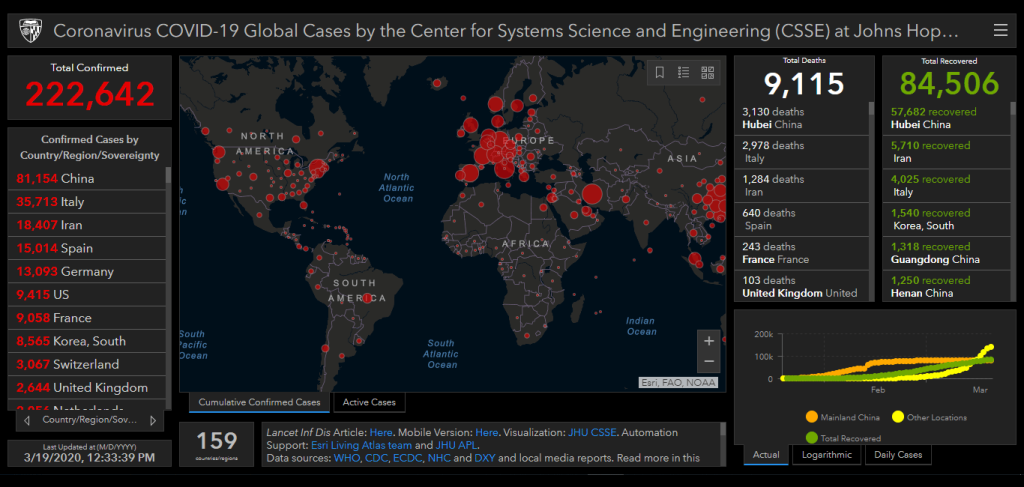(By Shuaib Olusesi)
In the wake of the ongoing novel coronavirus pandemic, epidemiologists are joining forces with data scientists to control the spread of the virus by making use of big data, machine learning and other digital tools.
Their coming aims to help provide real-time forecasts and other important information to front-line and public policy makers as the outbreak grows.
The approach they intend to employ,”outbreak analytics” looks out to gather all available data on an epidemic, confirmed cases, fatalities, test results, tracing those that came in contact with infected people, maps of population densities and demographics, traveler flows and migration, availability of health-care services, drug stockpiles and other factors.
After the data has been gathered, it’s then processed into appropriate formats by a machine-learning software trained to recognize patterns and clean up diverse data sources and then fed into algorithmic models. The models are programmed to predict number of new cases that are likely to arise in an exposed population, or peak infection rates under a given set of conditions, among other outcomes.
According to a report from an hospital in Israel, the data gotten from the outbreak analytics helps the hospital plan ahead for casualties, it allows for the provision of readily sufficient personnel and resources as the disease spreads.
The U.S. Center for Disease Control and Prevention began expanding the use of big-data tools in flu forecasting about seven years ago. Last year, the agency awarded $3 million in funding to a research team at the University of Massachusetts Amherst’s School of Public Health and Health Sciences to develop a data-based flu forecasting center, also a group at Carnegie Mellon University received funding for a similar center.
Both research teams are making us of these forecasting tools to help contain the novel coronavirus, they are pooling together series of analytic models from various sources. Open platforms allow forecasters to share data and code,this strategy helps piece together consistent and accurate predictions.
Nicholas Reich, a bio-statistician who leads the University of Massachusetts Amherst team, outlines that one of the goals of the ongoing project is to provide user-friendly information on virus infections to the public, which may include the development of a smartphone app to issue more timely alerts.
Mr. Jim Hare, a research vice president at technology research and advisory firm Gartner Inc. said the more accurate and up-to-date the observed date, the better the simulations, the outbreak analytics helps connect the dots across different data sources. He also said, the use of mobile-phones can be used to identify individuals who were in close contact with confirmed cases of the virus based on location services apps on their cellphones, which is called contact tracing.
Mr Hare also mentioned that, given the shortage of information about the novel virus, coming up with accurate forecasting models is quite challenging. It’s like trying to accurately forecast the weather using a temperature gauge.
On Monday, a team of experts at Oxford University said their research demonstrated the viability of a smartphone app to provide instant contact tracing—the ability to identify people who have had contact with confirmed Covid-19 cases—that would significantly help to contain the spread of coronavirus.
Christopher Fraser, a professor of pathogen dynamics at Oxford University’s Big Data Institute, who led the team, said the app could be used as a key data source for outbreak analytics.
“What you get out will depend on details of algorithms and the way the data flows are set up,” Mr. Fraser said. “Everyone understands that privacy and security are paramount, but so is tracking and controlling this epidemic,” he said, adding that implementing many of these tools falls on public policy makers.

